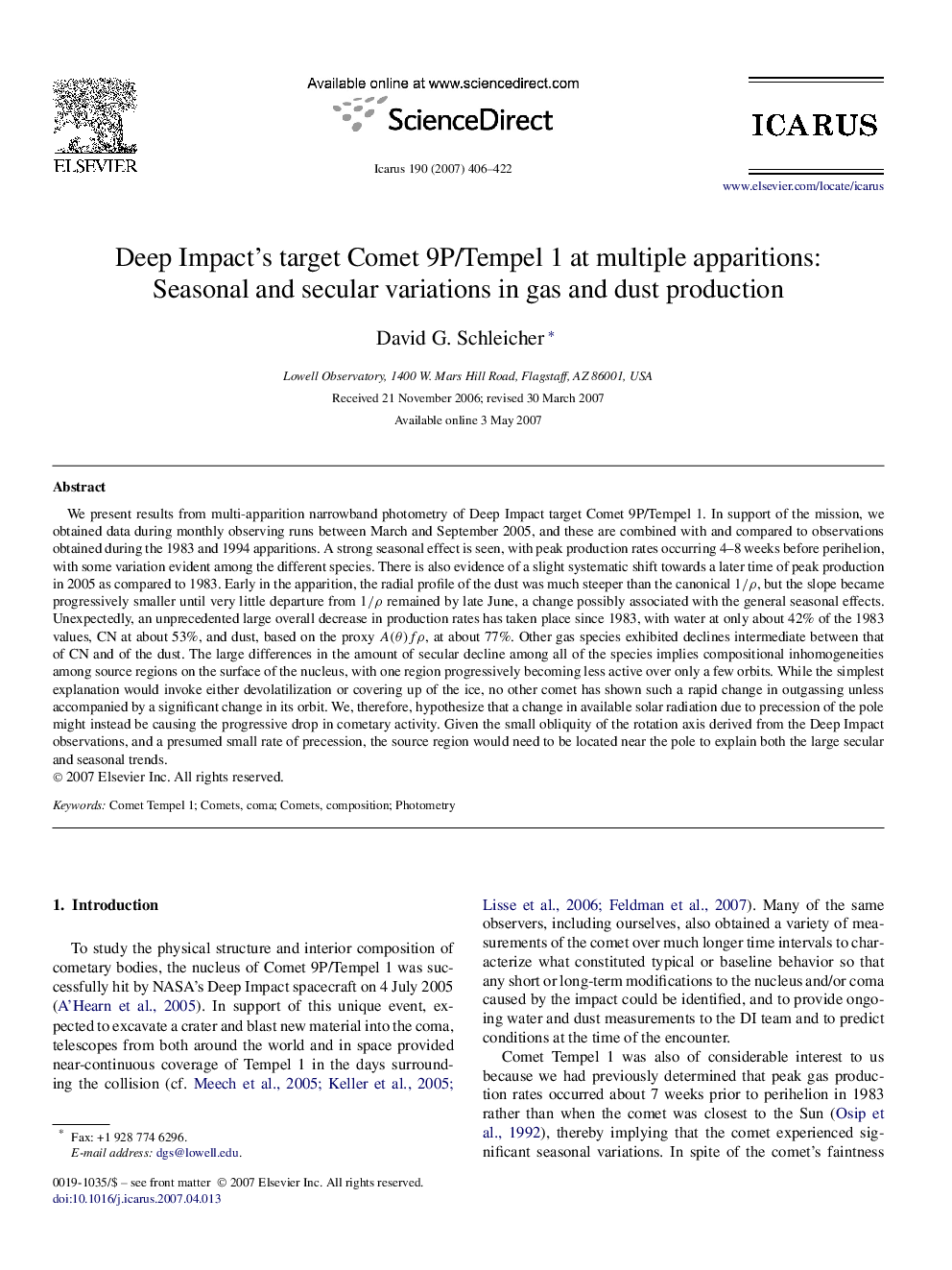| کد مقاله | کد نشریه | سال انتشار | مقاله انگلیسی | نسخه تمام متن |
|---|---|---|---|---|
| 1775292 | 1523567 | 2007 | 17 صفحه PDF | دانلود رایگان |

We present results from multi-apparition narrowband photometry of Deep Impact target Comet 9P/Tempel 1. In support of the mission, we obtained data during monthly observing runs between March and September 2005, and these are combined with and compared to observations obtained during the 1983 and 1994 apparitions. A strong seasonal effect is seen, with peak production rates occurring 4–8 weeks before perihelion, with some variation evident among the different species. There is also evidence of a slight systematic shift towards a later time of peak production in 2005 as compared to 1983. Early in the apparition, the radial profile of the dust was much steeper than the canonical 1/ρ1/ρ, but the slope became progressively smaller until very little departure from 1/ρ1/ρ remained by late June, a change possibly associated with the general seasonal effects. Unexpectedly, an unprecedented large overall decrease in production rates has taken place since 1983, with water at only about 42% of the 1983 values, CN at about 53%, and dust, based on the proxy A(θ)fρA(θ)fρ, at about 77%. Other gas species exhibited declines intermediate between that of CN and of the dust. The large differences in the amount of secular decline among all of the species implies compositional inhomogeneities among source regions on the surface of the nucleus, with one region progressively becoming less active over only a few orbits. While the simplest explanation would invoke either devolatilization or covering up of the ice, no other comet has shown such a rapid change in outgassing unless accompanied by a significant change in its orbit. We, therefore, hypothesize that a change in available solar radiation due to precession of the pole might instead be causing the progressive drop in cometary activity. Given the small obliquity of the rotation axis derived from the Deep Impact observations, and a presumed small rate of precession, the source region would need to be located near the pole to explain both the large secular and seasonal trends.
Journal: Icarus - Volume 190, Issue 2, October 2007, Pages 406–422